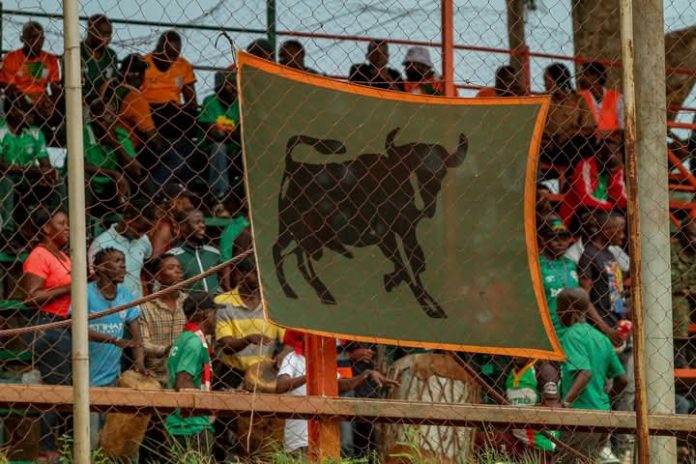By Gabriel Nkunika
Green Buffaloes FC (GBFC) was the most dominant football club in Zambia during the 1970s. Backed by the Zambia Army, the club won six league titles in the decade and became a formidable force in Zambian football. Their dominance was built on discipline, structure, and a unique recruitment strategy that gave them a significant advantage over civilian clubs.
The Winning Strategy
Unlike most teams, Buffaloes had a military-backed structure that enabled them to attract the best Zambian players by offering them opportunities to join the Zambia Army. This strategy provided several advantages:
- Job Security & Benefits – Players received stable salaries, housing, healthcare, and post-football career opportunities, making Buffaloes an attractive club.
- Squad Stability – Since most players were also army personnel, Buffaloes avoided losing key players to other clubs, ensuring continuity.
- Financial Stability – While other clubs struggled with funding, Buffaloes had stable backing from the Zambia Army, ensuring they always had resources for travel, facilities, and training.
One of the important figures in Green Buffaloes’ history is the late Col Brightwell Banda who was an unheralded genius in the local beautiful game.
The man stands out as the first Zambian to be trained to the hilt as a football coach. Going into the second half of the 70s, he already possessed an ‘A’ licence obtained in Germany. For two years, he was away in that country and Yugoslavia. During that time, he was for six months on attachment at Bayern Munich.
GBFC became a talking point in local football in the 70s going by the way they played; fondly referred to as the ‘Untouchables’. They were too good to be true.

Between 1973 and 1981, Green Buffaloes won six league titles – the 1974 one, going all the way with an unbeaten run! Only Nkana have achieved this feat locally, theirs in 1982. GBFC also collected numerous silverware during Col Banda’s time.
The Decline of Buffaloes in the 1980s
Despite their dominance in the 1970s, Green Buffaloes began to decline in the 1980s. Several factors contributed to their fall. The rise of Nkana FC saw them become a powerhouse, winning seven league titles. Nkana had better scouting, financial backing from mining companies, and stronger fan support.
As Zambian football became more professional in the 1990s and 2000s, players sought better salaries and foreign exposure, which Buffaloes could not offer. Additionally, while teams like Power Dynamos, ZESCO United, Zanaco, Lusaka Dynamos, and Buildcon began recruiting talent from DR Congo, Ghana, and Zimbabwe, Buffaloes stuck to signing only local players, limiting their competitiveness.
Furthermore, other clubs adopted modern football strategies with long-term coaching projects, while Buffaloes remained too traditional in their approach.

A Trophy Drought and Minimal Success
Since the 1970s, Buffaloes have struggled to regain their dominance. Their only major trophy in recent decades was the 2015 Barclays Cup (now ABSA Cup), where they defeated Nkwazi FC 2-0. Buffaloes have also qualified for continental competitions such as the CAF Confederation Cup, with back-to-back qualifications in 2017 and 2018, but they have struggled to make a significant impact on the international stage.
Meanwhile, teams like Nkana, ZESCO United, Power Dynamos, and Zanaco have won multiple league titles, leaving Buffaloes behind.
Interestingly, while the men’s team has struggled, the Green Buffaloes Women’s Team has become the most dominant force in Zambian women’s football. Using the same military-backed recruitment strategy, they have:
- Won multiple Zambian Women’s League titles.
- Become the 2022 CAF Women’s Champions League COSAFA winners.
- Supplied many top players to the Zambia Women’s National Team (Copper Queens).
A Shift in the Transfer Policy
In 2022, Green Buffaloes FC made a significant change to its transfer policy in an effort to strengthen the squad. The club announced that it would begin signing foreign players, marking a departure from its previous approach. However, a key condition was set—only players willing to join without demanding military jobs would be considered. This shift aimed to attract talented international players while maintaining the club’s operational principles as a military-affiliated team.
Unfortunately, this strategy has not yet yielded positive results, and the club has not regained its glory days of the 1970s.
Green Buffaloes FC will always be remembered as the dominant force of the 1970s, but their failure to adapt to changing football dynamics led to their decline. However, with the right strategy, they could still rise again and reclaim their place among Zambia’s football elites. The question remains—will they evolve, or will they remain a historical powerhouse of the past?





